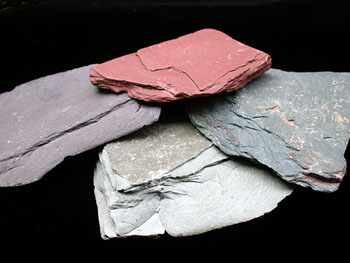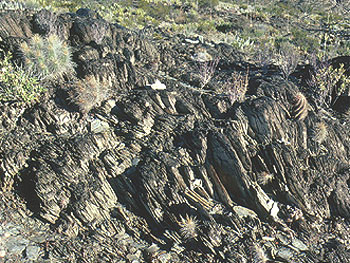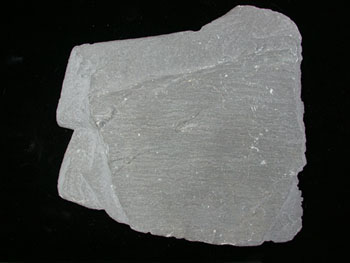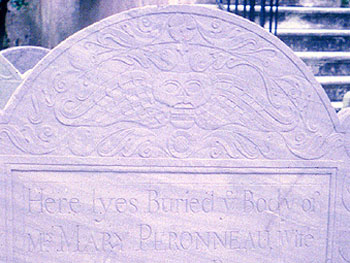Slate
| Slates are very fine-grained rocks whose foliation is expressed by the fact that they split along such flat surfaces that they are useful as roofing tiles, in classic pool tables, and before 1945 as chalk boards. This slaty cleavage results from the microscopic clay and mica minerals having been recrystallized into perfectly parallel arrangements. As you can see below, slates come in a variety of colors (more than shown below!). |
|
Here are four colors of slate. They also commonly come in black, bluish black ("slate blue"), and gray.
|

|
|
The slaty cleavage causes outcrops of slate to break into all sorts of flat pieces.
The cleavage of slate develops perpendicular to the biggest pressures at the time of formation. In this case, the slate was squeezed between approximately the lower left and upper right parts of the photo. The main pressure was NOT vertical (i.e., due to burial)!!
|

|
|
This is a nice piece of red slate.
Click on the image for a super-closeup. You will see how fine-grained slate really is.
|

|
|
This is a nice piece of greenish gray slate.
Click on the image for a super-closeup. You will see how fine-grained slate really is.
|

|
|
Even dead people like slate! This slate tombstone from Charleston, SC, is from the 1700s and yet is extremely well preserved.
The Congregationalist Church in Charleston has extremely nice tombstones.
|
 |
|

![]()




